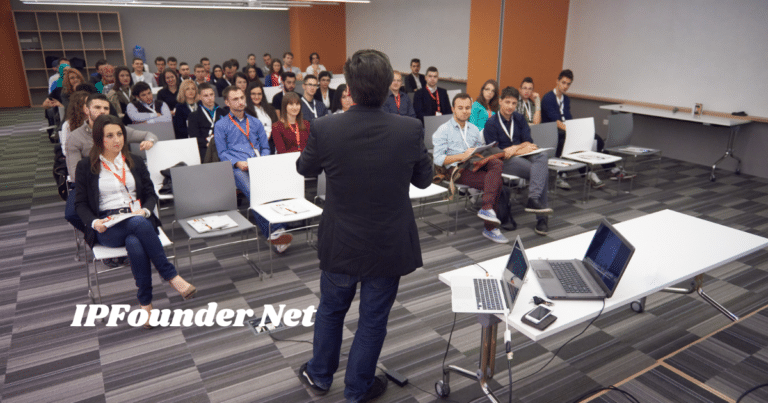In the rapidly evolving landscape of the modern world, innovation serves as the cornerstone of organizational advancement and competitive advantage across sectors. Companies continuously strive to maintain their market position, respond to shifting industry dynamics, and address their customers’ changing demands. Among various strategic frameworks, the multidisciplinary approach to innovation, exemplified by the QXEFV model, has emerged as a particularly influential methodology in recent times.
Understanding QXEFV
The QXEFV framework forms the foundation of the multidisciplinary innovation approach, with each letter embodying a fundamental principle that shapes the innovative process:
Q – Questioning Conventional Wisdom: This element stresses the need to challenge existing paradigms and seek fresh viewpoints.
X – eXploring Possibilities: Nurturing creative thinking and adopting an experimental, risk-tolerant mindset.
E – Embracing Diversity: Harnessing the strength of varied perspectives, cultural backgrounds, and professional experiences.
F – Fostering Collaboration: Creating high-performing teams and cultivating transparent communication and mutual trust.
V – Valuing Adaptability: Maintaining flexibility, learning from setbacks, and implementing continuous improvement cycles.
Importance of Innovation in Today’s World
Innovation has transcended beyond being merely a corporate catchphrase to become essential for business sustainability. Organizations that resist innovation risk falling behind, while those embracing it discover new pathways to expansion and achievement. From creating revolutionary products to streamlining operational processes or transforming business frameworks, innovation remains crucial for maintaining relevance and excellence in contemporary times.
The Role of Multidisciplinary Approach
Innovation thrives at the intersection of different disciplines, where diverse expertise and perspectives converge to spark creativity. This convergence catalyzes new ideas and enables meaningful transformation, driving progress and change. The multidisciplinary approach promotes cross-functional collaboration, dismantling organizational barriers and nurturing an environment of discovery and experimentation.
Exploring Multidisciplinary Collaboration
Multidisciplinary collaboration unites professionals with varied skill sets, backgrounds, and perspectives to address complex challenges and develop innovative solutions. Through the integration of insights from fields spanning technology, design, psychology, and business, organizations can identify novel opportunities and tackle challenges with fresh approaches.
Definition and Significance: Multidisciplinary collaboration entails uniting experts across various fields to pursue shared objectives. This methodology proves valuable by facilitating idea exchange and enabling comprehensive understanding of complex challenges.
Benefits of Cross-Disciplinary Collaboration: The cross-disciplinary approach yields multiple advantages, including enhanced creativity, superior problem-solving capabilities, and more robust decision-making processes. Organizations can develop more innovative and impactful solutions by leveraging team members’ diverse expertise.
Applications in Innovation
The multidisciplinary approach to innovation demonstrates remarkable versatility in its practical applications across diverse sectors. From revolutionizing healthcare delivery to transforming technological advancements, from reshaping financial services to modernizing educational methodologies, organizations worldwide are leveraging cross-disciplinary collaboration to fuel innovation and accomplish strategic objectives.
Examples of Successful Multidisciplinary Projects:
The transformative impact of multidisciplinary collaboration is evident through numerous success stories.
In healthcare, integrated teams of medical professionals, researchers, engineers, and designers work together to develop innovative solutions that improve patient care. By combining expertise across disciplines, they pioneer new treatment protocols and therapeutic interventions, ultimately transforming healthcare practices and enhancing outcomes.
Components of QXEFV
To successfully implement the QXEFV framework, organizations must comprehensively understand and incorporate each fundamental component into their innovation strategies.
Q – Questioning Conventional Wisdom
The ability to challenge established paradigms and question prevailing practices is fundamental to driving innovation and expanding possibilities. Organizations foster inventive thinking and creative problem-solving by encouraging individuals to scrutinize conventional approaches and explore alternative perspectives.
Importance of Challenging Assumptions:
Revolutionary innovations often emerge from questioning established norms and challenging traditional beliefs. By promoting critical thinking and systematic evaluation of existing practices, organizations can uncover untapped opportunities and catalyze meaningful transformation.
Cultivating a Culture of Curiosity:
Developing an environment that nurtures curiosity is crucial for sustaining innovation. Organizations can spark creativity and drive groundbreaking advancements by encouraging team members to pose questions, explore novel concepts, and embrace diverse viewpoints.
X – eXploring Possibilities
Innovation thrives on creativity and experimentation. Organizations can discover new opportunities and drive substantial change by embracing exploration and maintaining an inquisitive mindset.
Encouraging Creativity and Out-of-the-Box Thinking:
Creativity serves as the driving force behind innovation. Organizations can unlock novel opportunities by empowering employees to think innovatively and explore unconventional ideas.
Experimentation and Risk-Taking:
Innovation necessitates experimentation and calculated risk-taking. By creating supportive environments where employees feel empowered to take initiative and experiment, organizations can cultivate innovation and develop breakthrough solutions.
E – Embracing Diversity
Diversity acts as a powerful catalyst for innovation. Through the promotion of diversity and inclusion, organizations can harness their employees’ varied perspectives, backgrounds, and experiences to drive innovation and achieve strategic objectives.
Leveraging Different Perspectives and Backgrounds:
The fusion of diverse thought patterns serves as a cornerstone for driving innovation forward.
When organizations bring together individuals from diverse cultural backgrounds, professional experiences, and personal journeys, they cultivate an environment ripe for groundbreaking ideas and innovative solutions. This diversity fosters creativity, leading to approaches that might otherwise remain unexplored.
Fostering Inclusivity and Equality:
Creating an environment of genuine inclusion stands paramount in nurturing innovation. Organizations can maximize their innovative potential by establishing a workplace where every team member feels genuinely appreciated, deeply respected, and thoroughly empowered to share their unique insights and contributions.
F – Fostering Collaboration:
The spirit of collaboration forms the bedrock of innovative success. Through the cultivation of high-performing teams and the promotion of transparent communication channels and mutual trust, organizations can effectively harness their collective intellectual capital to drive transformative change.
Building Effective Teams:
The foundation of productive collaboration lies in assembling teams that embrace diversity and inclusion.
Organizations can drive innovation and create powerful synergies by bringing together professionals whose skills, experiences, and viewpoints complement and enhance each other. This collaborative approach accelerates creativity and problem-solving, leading to more impactful solutions.
Communication and Trust:
The pillars of open communication and mutual trust are fundamental to collaborative success. By fostering an organizational culture built on transparency, authenticity, and mutual respect, companies can effectively dissolve departmental barriers and facilitate seamless cross-functional collaboration.
V – Valuing Adaptability:
In our rapidly evolving business landscape, adaptability emerges as a crucial driver of innovation. Organizations that demonstrate agility and responsiveness to change can effectively learn from setbacks, implement rapid iterations, and continuously enhance their innovation processes.
ALSO READ ABOUT: Ausschütter
Being Agile in a Fast-Changing World:
Today’s dynamic business environment demands organizational agility and adaptability. By embracing these qualities, companies can swiftly respond to evolving market dynamics, shifting customer preferences, and emerging technological innovations.
Learning from Failures and Iterating:
Setbacks and failures represent integral stepping stones in the innovation journey. By reframing failures as valuable learning opportunities, organizations can nurture a culture that embraces experimentation and continuous improvement. Through rapid iteration cycles and systematic incorporation of feedback, organizations can refine their innovative initiatives and drive meaningful transformation.
Implementing QXEFV in Innovation
The successful implementation of the QXEFV framework requires organizations to cultivate an environment that nurtures creativity, encourages collaboration, and supports continuous improvement.
Creating an Environment Conducive to Innovation
Innovation flourishes in settings that actively promote creative thinking, collaborative efforts, and calculated risk-taking. Organizations can create a thriving innovation ecosystem by providing comprehensive support and necessary resources.
Leadership Support and Vision: Organizational leadership plays an instrumental role in driving innovation forward. Through clear vision-setting and robust support mechanisms, leaders can cultivate an innovation-centric culture that empowers employees to embrace risks and explore novel possibilities.
Resources and Infrastructure: The provision of essential resources and infrastructure forms a critical foundation for innovation support. This encompasses research and development funding, access to cutting-edge technologies, and dedicated collaboration spaces, all of which enable innovation to flourish.
Encouraging Continuous Learning and Development
Innovation represents an ongoing expedition rather than a final destination. Through the active promotion of lifelong learning and professional growth, organizations can inspire their workforce to maintain their curiosity, investigate novel concepts, and catalyze meaningful transformation.
Training Programs: The implementation of comprehensive training initiatives and career advancement opportunities plays a vital role in developing the competencies and capabilities essential for innovation.
Investing in employee education and skill development equips the workforce with the tools and expertise needed to drive innovation.
Knowledge Sharing Platforms: The facilitation of knowledge exchange and collaborative efforts stands crucial in propelling innovation forward. Organizations can cultivate an environment of continuous improvement and innovation by implementing robust platforms and tools that enable team members to exchange ideas, work jointly on initiatives, and learn from their collective experiences.
Establishing Clear Goals and Metrics
Organizations must define precise objectives and performance indicators aligned with their strategic vision to evaluate the effectiveness of their innovation initiatives.
Measuring Innovation Success: The assessment of innovation achievements can take multiple forms, including the creation of innovative products and services, enhancement of operational processes, and growth in revenue and market presence. Through the establishment of well-defined goals and measurement criteria, organizations can monitor their progress and evaluate the impact of their innovation strategies.
Celebrating Achievements: The acknowledgment and celebration of innovation milestones play a crucial role in motivating employees and reinforcing an innovation-driven culture. Organizations can establish a positive reinforcement cycle that promotes sustained creativity and excellence by recognizing and rewarding innovative contributions.
Case Studies
Real-world examples demonstrate the QXEFV framework’s effectiveness in driving innovation and delivering concrete outcomes.
Innovations Achieved Through QXEFV
Case Study 1: [Company Name] Implements Multidisciplinary Approach: [Brief description of the case study, highlighting the innovative solution developed through multidisciplinary collaboration and its impact on the organization and industry.]
Case Study 2: [Company Name] Revolutionizes Industry Through Innovation: [Brief description of the case study, showcasing how a company’s adoption of the QXEFV framework led to groundbreaking innovations and transformed the industry.]
Challenges and Solutions
While the QXEFV framework offers significant advantages, organizations may encounter obstacles when implementing multidisciplinary innovation approaches. However, these challenges can be overcome through appropriate strategies and solutions.
Overcoming Resistance to Change
Change resistance often presents a significant barrier to innovation.
Organizations can overcome resistance and drive meaningful transformation by addressing cultural obstacles and clearly communicating the benefits of QXEFV. This approach helps build understanding and support, paving the way for successful implementation and lasting change.
Addressing Cultural Barriers: Cultural norms and established practices can impede innovation efforts. Organizations can break down cultural barriers and foster an innovation-conducive environment by promoting openness, experimentation, and collaboration.
Communicating the Benefits of QXEFV: Building understanding around the QXEFV framework’s advantages is crucial for securing employee buy-in and minimizing change resistance. Organizations can motivate workforce adoption of new methodologies by emphasizing the positive impact of multidisciplinary collaboration on innovation outcomes.
Managing Conflicting Priorities
Innovation initiatives frequently vie for organizational resources and attention. Through effective project prioritization, resource allocation, and conflict resolution within diverse teams, organizations can maintain the momentum of their innovation endeavors.
Prioritizing Projects and Resources: Innovation projects vary significantly in their potential impact and value. Organizations can maximize their success potential by strategically prioritizing initiatives based on their alignment with business objectives, anticipated outcomes, and resource requirements. This systematic approach ensures that valuable resources are directed toward the most promising and impactful innovation ventures.
Mediating Disputes Within Multidisciplinary Teams: While diverse teams inevitably experience disagreements, these challenges can be transformed into opportunities for growth. By cultivating transparent communication channels, nurturing empathetic understanding, and promoting productive discussions, organizations can effectively resolve conflicts and maintain team focus on innovation objectives.
Future Trends
The landscape of QXEFV and multidisciplinary innovation approaches continues to evolve, shaped by emerging trends and technological advancements.
The Evolution of QXEFV in Innovation
Emerging technologies like artificial intelligence, machine learning, and advanced analytics are revolutionizing the innovation landscape, enabling more efficient and impactful solutions across industries. Organizations can enhance their creative capabilities, strengthen collaborative efforts, and develop innovative solutions by leveraging these technological advancements.
Global Collaboration and Connectivity: Today’s interconnected global economy facilitates unprecedented cross-border collaboration and cultural exchange. Organizations can leverage this connectivity to access diverse talent pools and drive worldwide innovation initiatives.
Opportunities and Challenges Ahead
The future of innovation presents both exciting possibilities and significant challenges that organizations must navigate.
Harnessing the Power of AI and Machine Learning: AI and machine learning technologies offer transformative opportunities across industries. Organizations can optimize operations, generate valuable insights, and create customized solutions by effectively implementing these technologies.
Ethical Considerations in Innovation: The rapid pace of technological advancement brings important ethical considerations to the forefront. Organizations must carefully address concerns ranging from data protection and security to algorithmic fairness and bias in their innovation journey.
Conclusion
Innovation serves as a crucial driver of organizational success and growth in our dynamic business environment. The QXEFV framework and multidisciplinary approaches enable organizations to unlock new possibilities, address complex challenges, and maintain competitive advantages. Success in innovation requires embracing diversity, fostering collaboration, and maintaining adaptability. As we move forward, organizations must remain committed to continuous learning, flexibility, and challenging conventional wisdom.





